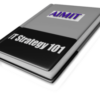Learn how to shape a consulting brand that resonates with CIOs and other technology leaders by honing your Unique Value Proposition (UVP), crafting a consistent identity, showcasing your expertise through thought leadership, and leveraging CIO Index for greater visibility and credibility.
The consulting landscape has never been more crowded. Firms large and small are vying for the attention of the same limited pool of executive clients, all eager to prove their worth and expertise. With so many voices clamoring to be heard, it is increasingly challenging for a single consultant—or even an established consulting firm—to rise above the noise.
Chief Information Officers (CIOs) and other senior executives are inundated with offers from myriad service providers. They need a clear reason to pick you over someone else. A compelling brand—one that clearly communicates your unique value and expertise—helps you stand out in their minds. It goes beyond having a professional logo or tagline; it’s about forging an identity that resonates with CIOs’ specific pain points and aspirations. In an environment where trust and credibility are paramount, building a strong brand can be the difference between consistently attracting high-value clients and struggling to gain traction.
This article will demonstrate how you can build a memorable brand that cuts through the clutter, while also explaining how platforms like CIO Index can amplify that visibility and credibility. By creating a profile, company pages, and service listings on CIO Index—and participating in its community—you can significantly enhance your reach among CIOs. Through practical tips and proven strategies, you will learn to refine your positioning, craft a compelling message, and leverage the strengths of CIO Index to stand out in today’s competitive consulting market.
II. Understanding the Value of a Strong Brand
A. What Is a “Brand” for a Consultant?
Perception, Reputation, and Personal Story
At its core, a brand is more than just a logo or tagline. It is the collective perception that clients and prospects have of who you are, what you stand for, and how you deliver value. For a consultant, this includes your unique expertise, the way you communicate, the results you achieve, and even the experiences and stories you share with your audience.
How Your Clients Experience Your Values and Expertise
Every interaction with a client—be it a proposal, a meeting, or a phone call—reinforces or detracts from your brand. Your brand is reflected in how consistently you live out your values and demonstrate your skills. When you show genuine dedication to solving a client’s challenges, that commitment becomes a defining aspect of your reputation.
B. Impact on Client Acquisition and Retention
Influence on Perceived Credibility and Trustworthiness
In the consulting world, trust is everything. A well-established brand signals to potential clients that you are both credible and capable. When senior executives, particularly CIOs, see consistency in your messaging and quality in your track record, they are more likely to choose—and continue working with—you. Credibility built through branding can alleviate concerns about risk and investment, making it easier for clients to say “yes” to your services.
Differentiation in a Saturated Market
With so many consultants offering similar services, how do you stand out? A distinctive brand clarifies what makes you different—be it your specialization, your style of engagement, or your track record of success in specific industries. This differentiation can be the deciding factor that persuades a CIO to engage with you over a competitor. By thoughtfully shaping your brand, you give potential clients a clear reason to pick you as their trusted advisor.
III. Identifying Your Unique Value Proposition (UVP)
A. Self-Assessment
Evaluating Personal Strengths, Industry Experience, and Specialty Areas
Begin by taking a candid inventory of what you bring to the table. Are you particularly adept at strategic planning, digital transformation, or organizational change management? Do you have decades of experience in a niche industry that sets you apart? Identifying your strongest skills and most relevant experience is the first step toward forming a compelling UVP.
Importance of Clarity in Your Offerings
Your UVP will only resonate if it’s clear and specific. Prospective clients, especially C-level executives, typically have little time to decipher vague value statements. They want to know exactly what you do and how it will benefit them. The more specific and direct you are about the solutions you provide, the easier it will be for CIOs to see the immediate relevance of your expertise.
B. Market Research
Understanding Client Pain Points, Especially at the CIO Level
To truly stand out, you need to understand the challenges and concerns that keep CIOs awake at night—whether it’s optimizing IT budgets, managing data security, or driving digital innovation. Conduct interviews, read industry reports, and engage with thought leaders to gain insight into the issues that matter most to your target audience.
Benchmarking the Competition
A thorough analysis of your competitors can reveal potential gaps in the market and highlight areas where you can position yourself more effectively. Pay attention to how other consultants package their services, pitch their expertise, and interact with clients. Then, determine how you can differentiate your approach—whether it’s offering a unique methodology, deeper specialization, or more flexible engagement models.
C. Crafting a Concise UVP Statement
Communicating What You Do, Who You Serve, and How You Stand Out
Your UVP should be a succinct statement that captures three key elements:
- What You Do: For instance, “I help organizations streamline their IT operations.”
- Who You Serve: Example: “Specifically, I partner with mid-size firms transitioning to cloud-based infrastructures.”
- How You Stand Out: Finally, highlight how your process, results, or approach sets you apart: “Using a data-driven framework, I reduce operational costs by up to 30% in under six months.”
When all three components are clearly articulated, CIOs gain an immediate understanding of why they should pay attention to you. Your UVP acts as a north star, guiding your branding, marketing, and client engagement efforts in a way that resonates with your target audience.
IV. Crafting a Consistent Brand Identity
A. Visual Identity
Logo, Color Scheme, and Design Elements
Your consulting brand’s visual identity is often the first impression potential clients receive. A distinctive, well-designed logo immediately conveys professionalism, while a cohesive color palette and complementary design elements help solidify brand recognition. Every piece of visual content—from your website banners to business cards—should work in harmony to create a unified look and feel.
Consistency Across Social Media, Website, and Professional Platforms
Maintaining a uniform visual identity wherever you have an online presence helps build trust and brand recognition. The same logo, color scheme, and style should be visible on your LinkedIn profile, professional directories like CIO Index, and your personal or company website. This sense of visual unity assures prospective clients that they are interacting with the same professional entity, no matter where they find you.
B. Tone and Voice
Aligning Your Messaging with Your Target Audience’s Expectations
Your brand’s “voice” should be informed by your target market’s language, concerns, and preferences. Since you aim to attract CIOs and senior executives, a certain level of professionalism and domain expertise is expected. However, striking the right balance between technical authority and approachable clarity can distinguish your brand from more generic or overly formal consulting firms.
Balancing Professional Authority with Personal Approachability
While demonstrating expertise is essential, your communications shouldn’t feel robotic or distant. Infuse your brand voice with elements of storytelling, empathy, and genuine interest in client challenges. This human touch fosters a sense of connection, making it easier for potential clients to envision working with you.
C. Platform-Specific Consistency
Tailoring, Not Diluting, Your Brand
Each platform has its own culture and engagement style, but that doesn’t mean you should overhaul your branding for every channel. Instead, adapt the format and tone to suit the platform while preserving core elements of your identity. For example, LinkedIn might call for slightly more formal language than a personal blog post, but both should reflect your distinct voice and expertise.
Recognizable Yet Appropriate on LinkedIn, CIO Index, and Beyond
On LinkedIn, you might use concise updates and thought-leadership articles to connect with a broader professional audience. On CIO Index, however, you can delve deeper into IT-specific challenges and solutions, showcasing industry insights and success stories that resonate directly with CIOs. Regardless of the medium, your brand identity should remain consistent enough that a follower could easily recognize it as yours—even when the content format differs.
IV. Crafting a Consistent Brand Identity
A. Visual Identity
Logo, Color Scheme, and Design Elements
A distinct visual identity is often the first point of recognition for your brand. Your logo, color palette, and design style should collectively convey the core attributes you want to be known for—professionalism, creativity, or innovation, for example. This visual consistency helps prospective clients quickly identify that they are interacting with your consultancy, whether they encounter you on social media, at a conference booth, or on an online platform like CIO Index.
Consistency Across Platforms
Brand recognition flourishes when the same visual elements are consistently applied across all channels. Use the same logo, colors, and design templates on your website, social media profiles, and your CIO Index presence. This uniformity not only makes your consultancy memorable but also projects a sense of stability and reliability—traits CIOs appreciate when selecting a trusted advisor.
B. Tone and Voice
Aligning Your Messaging with Your Audience’s Expectations
When you’re speaking to CIOs, clarity and insight are paramount. Your tone should reflect your expertise in areas such as IT strategy, security, or digital transformation, but it shouldn’t overwhelm readers with jargon. Strike a balance between depth of knowledge and accessible, conversational language. This approach helps you maintain credibility without distancing those who want straightforward explanations and actionable advice.
Balancing Professional Authority with Personal Approachability
Showcasing your expertise is essential, but if your brand comes off as detached or impersonal, you may lose potential clients. Infuse your writing with personal insights, anecdotes, or real-world examples that illustrate your experience. This human touch makes your content relatable, reinforcing a sense of trust and authenticity—key components of a strong consultant-client relationship.
C. Platform-Specific Consistency
Tailoring, Not Diluting
Each platform you use—be it LinkedIn, a personal blog, or CIO Index—serves a slightly different function and audience. Tailor your content to fit the context of the platform while preserving core elements of your brand identity. This means you may opt for more concise, data-driven insights on LinkedIn, while a blog or white paper might allow for deeper explorations of a particular subject. Even with these adjustments, ensure your overall tone, style, and expertise remain consistent.
Recognizable Yet Appropriate on LinkedIn, CIO Index, and Beyond
On professional networks like LinkedIn, you might share success stories, thought-leadership articles, and concise updates on industry trends. On CIO Index, you have the opportunity to zero in on technology-focused discussions relevant to CIO challenges. In all instances, your brand identity—the way you communicate, the design you employ, and the value you offer—should feel cohesive, ensuring that no matter where a CIO encounters your brand, they recognize you as a trusted, knowledgeable consultant.
V. Showcasing Expertise
A. Thought Leadership Content
Publishing White Papers, Blog Posts, and Articles That Address CIO Challenges
One of the most effective ways to demonstrate your expertise is by generating content that speaks directly to the hurdles facing today’s CIOs. Whether it’s a white paper on data security, a blog post on cost optimization, or an article about emerging technologies, provide tangible solutions and actionable insights. By consistently sharing your knowledge, you become a trusted resource executives turn to for guidance.
Using Storytelling to Demonstrate Practical Experience and Outcomes
While data points and stats are important, stories often resonate more deeply. Share real-world case studies, success stories, or examples from your consulting engagements. Highlight the process, the hurdles you faced, and how you achieved results. This narrative approach captivates readers, helping them see how your expertise translates into tangible value within their own organizations.
B. Speaking Engagements and Workshops
Positioning Yourself as an Industry Authority Through Live or Virtual Events
Hosting or participating in webinars, conferences, or workshops signals to potential clients that you’re knowledgeable and confident in your field. Speak on topics that align with CIO priorities—digital transformation, cybersecurity, innovation strategy—and offer clear takeaways. Being visible as a speaker or workshop leader enhances your credibility and helps you build meaningful connections with senior executives.
How Testimonials and Post-Event Feedback Support Brand Building
Feedback from event organizers, attendees, and even co-presenters can serve as powerful social proof of your expertise. Positive testimonials validate your authority and can be showcased on your website, social media, and your CIO Index profile. Over time, these endorsements become part of your brand narrative, reinforcing your reputation as a consultant with demonstrable impact.
C. Certifications and Endorsements
Adding Credibility Through Recognized Industry Credentials
Certifications signal a commitment to professional development and adherence to industry best practices. Whether it’s a Project Management Professional (PMP) license, a Certified Information Systems Security Professional (CISSP) credential, or specialized training in cloud architecture, showcasing these achievements reassures CIOs that your skills meet a verifiable standard of excellence.
Highlighting Endorsements From Reputable Figures or Organizations
Endorsements from well-known industry leaders, professional associations, or satisfied clients can significantly boost your standing in the eyes of potential buyers. These validations confirm that your services have been vetted by respected peers or institutions. Feature them prominently in your marketing collateral, on your LinkedIn profile, and on your CIO Index page to establish immediate credibility with decision-makers.
VI. Leveraging Networking and Strategic Partnerships
A. Building Professional Connections
Targeting the Right Groups and Associations
Not all networks are created equal. The key is identifying where CIOs and other senior technology leaders congregate. This might be specialized forums, industry conferences, or professional associations. By focusing on these targeted communities—such as dedicated CIO clubs or technology forums—you’re more likely to encounter the decision-makers who can benefit from your services.
Balancing Online and Offline Interactions
Online platforms like LinkedIn, professional groups, and CIO Index offer convenient gateways to connect with potential collaborators and clients. However, don’t underestimate the value of attending conferences, local meetups, or executive roundtables in person. These face-to-face interactions often foster a deeper level of trust and camaraderie, which can be pivotal in securing long-term consulting engagements.
B. Joint Ventures and Collaborations
Partnering With Complementary Service Providers to Expand Your Reach
Joining forces with consultants who offer complementary services—such as a cybersecurity expert teaming up with a cloud migration specialist—can help both parties tap into a broader client base. Joint ventures allow you to present more holistic solutions to CIOs, making your combined offering more appealing.
Showcasing Case Studies and Success Stories
Collaborations not only widen your network; they also provide valuable proof points when you highlight successful outcomes. Document the process and results of each joint venture in a concise case study or success story. Post these on your website, share them on social media, and feature them on your CIO Index profile. Demonstrating tangible results through partnerships reinforces your credibility and broadens your appeal to potential clients.
C. Engagement on Social Platforms
Commenting on Industry Discussions, Sharing Content, and Actively Building a Professional Presence
Social media platforms—particularly LinkedIn, Twitter, and CIO Index—are effective arenas for demonstrating thought leadership and building professional relationships. By commenting on relevant discussions, you show your expertise and willingness to engage with peers. Sharing high-quality content, whether your own or curated from reputable sources, further positions you as a well-informed consultant who adds value to the conversation.
Avoiding Spam; Focusing on Genuine Engagement and Insight
Authenticity is crucial. Bombarding groups or contacts with self-promotional material can tarnish your reputation. Instead, offer insightful commentary on current technology trends, share lessons learned from personal experience, or pose thought-provoking questions. By prioritizing genuine interaction over relentless promotion, you build trust and credibility—key factors for a successful consulting brand in any networking or partnership scenario.
VII. Measuring and Refining Your Brand
A. Key Performance Indicators (KPIs)
Tracking Website Traffic, Lead Generation, and Social Engagement
It’s easy to get caught up in aesthetic or anecdotal measures of brand success, but objective data provides a clearer picture. Monitoring your website traffic and online lead inquiries reveals how many prospects your brand is attracting and whether those prospects align with your ideal client profile. Likewise, social engagement metrics—likes, shares, comments—help gauge the resonance and reach of your content.
Monitoring Conversions Specifically From Targeted Platforms (e.g., CIO Index)
If you have a presence on CIO Index, LinkedIn, or other niche platforms, track how many consultations, inquiries, or sign-ups come from each source. This detailed breakdown informs you which platforms are most effective for your outreach and where you should focus your efforts. Monitoring conversions can be as simple as using unique referral links, custom landing pages, or asking prospects how they heard about you.
B. Feedback Loops
Gathering and Analyzing Client Testimonials for Continuous Improvement
A robust testimonial from a satisfied CIO or executive is one of the most potent endorsements you can receive. Rather than simply collecting these accolades, analyze them. What specific aspects of your service do clients praise most? Are there any recurring themes—like timeliness, cost savings, or creative problem-solving? These insights can help refine the ways you present and deliver your services.
Using Surveys or Direct Interviews to Gauge Brand Perception
Beyond collecting testimonials, consider implementing a more systematic approach to feedback. Short surveys or direct interviews can surface hidden pain points or highlight areas for enhancement. You might discover, for example, that clients appreciate your strategic insights but struggle with the depth of your follow-up. With this knowledge, you can adjust your offerings to address client concerns, thereby strengthening your brand reputation.
C. Iterating on Brand Strategy
Making Data-Driven Adjustments to Messaging, Offerings, and Marketing Channels
Once you have metrics in hand and feedback from your clients, use that data to inform strategic adjustments. If you notice that certain topics or services generate the most interest, emphasize them in your messaging. Maybe your posts on digital transformation consistently drive higher engagement—this could suggest a need to pivot your branding more toward that specialty.
Staying Agile to Remain Relevant in a Fast-Changing Consulting Landscape
The consulting sector, especially around technology and strategic leadership, evolves rapidly. What set you apart last year may be table stakes this year. Keep an eye on industry trends, be willing to pivot your focus, and continually refresh your brand strategy. This agility helps you maintain a competitive edge and ensures your brand continues to resonate with CIOs and other high-level decision-makers.
VIII. How CIO Index Elevates Your Brand
A. Creating a Distinctive Profile
Step-by-Step Guide to Setting Up a Compelling Personal Profile
- Start with Strong Basics: Include a professional headshot, succinct bio, and relevant contact details.
- Craft a Clear Headline: Use it to convey your area of expertise: “Digital Transformation Specialist for Mid-Market Enterprises,” for example.
- Highlight Key Achievements: Select a few high-impact projects or case studies that demonstrate tangible results.
- Incorporate Keywords: Think about the terms a CIO might use when searching for a consultant (e.g., “IT Strategy,” “Cybersecurity,” or “Cloud Migration”).
Using Multimedia (Videos, Articles, Images) to Illustrate Your Expertise
A text-heavy profile can make it hard for a reader to visualize the true depth of your experience. Enrich your profile with short videos explaining your approach, infographics summarizing past engagements, and links to published articles or white papers. This variety not only captivates potential clients but also demonstrates your commitment to clear communication and thought leadership.
B. Optimizing Company Pages and Service Listings
Showcasing Your Firm’s Unique Strengths With Rich Descriptions and Case Studies
Your company page should quickly explain what your consultancy does, whom it serves, and how it delivers results. Use concise, outcome-focused language, and include compelling case studies that highlight ROI, innovation, or other quantifiable successes. Explicitly mentioning how your services solve pressing CIO challenges—such as cloud migration or data governance—can further pique interest.
How CIO Index Helps You Reach a Focused Audience of Technology Executives and Decision-Makers
Unlike broad professional networks, CIO Index is designed for technology leaders and those who cater to them. By creating comprehensive service listings on this platform, you’re placing your consultancy in front of precisely the decision-makers you want to reach—CIOs, CTOs, and IT directors seeking expert guidance.
C. Gaining Credibility Through the CIO Community
Engaging in Forums, Q&A Sessions, and Discussion Boards to Share Insights
CIO Index hosts discussions and forums on various tech and leadership topics. Actively participating in these conversations not only showcases your industry expertise but also positions you as a helpful thought leader who’s genuinely interested in solving challenges. Regularly contributing well-researched commentary or asking thoughtful questions can quickly raise your visibility.
Earning Endorsements and Reviews That Reinforce Your Authority
As you interact within the CIO community and potentially work with leads from the platform, you can request endorsements or reviews. These serve as social proof of your abilities and effectiveness. When CIOs vouch for your expertise or outcomes, it carries significant weight with other high-level executives exploring their options for consulting services.
Networking With CIOs for Potential Collaborations and Referrals
By consistently participating and building relationships, you might discover opportunities to collaborate with other experts or receive referrals to prospective clients. Shared challenges and mutual interests often spark connections that lead to joint ventures, speaking engagements, or direct consulting projects.
D. Analytics and Visibility
Leveraging CIO Index’s Built-In Metrics to Track Profile Views and Inquiries
Knowledge is power, and real-time analytics on who’s viewing your profile or engaging with your posts can offer critical insight into potential leads. Tracking trends over time—like which types of content draw the most visitors—helps you refine your branding strategies.
Using Insights to Refine Your Brand Messaging and Positioning
If you notice a spike in interest whenever you publish content related to, say, security assessments or cloud strategy, that signals an area of high demand. Use these analytics to prioritize the types of services or case studies you highlight on your profile. Over time, these refinements ensure your brand remains tightly aligned with what CIOs actively seek.








